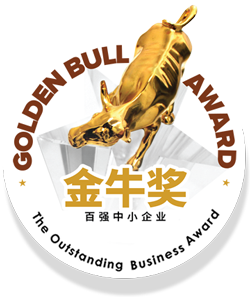To boost the SEO for your food and beverage business, you'll need to focus on strategies that enhance your visibility, attract local customers, and engage with your audience. Here’s a comprehensive guide:
1. Keyword Research and Optimization
- Identify Keywords: Use tools like Google Keyword Planner, Ahrefs, or SEMrush to find relevant keywords related to your offerings (e.g., "best coffee shop," "vegan restaurant near me," "craft beer brewery").
- Optimize Content: Incorporate these keywords naturally into your website’s content, including menu descriptions, blog posts, and page titles.
- Long-Tail Keywords: Focus on specific long-tail keywords (e.g., "gluten-free bakery in [City Name]") to capture niche markets.
2. Create High-Quality Content
- Menu Descriptions: Write unique, mouth-watering descriptions for each dish or beverage that include relevant keywords.
- Blog Posts: Publish blog posts regularly that cover topics like recipes, food trends, and behind-the-scenes stories (e.g., "How We Source Our Organic Ingredients").
- Seasonal Content: Create content around seasonal events or holidays (e.g., "Best Christmas Desserts") to attract timely searches.
3. On-Page SEO
- Title Tags and Meta Descriptions: Ensure each page has a unique, keyword-rich title tag and meta description.
- Header Tags (H1, H2, H3): Use header tags to structure your content and include primary keywords.
- Image Optimization: Use descriptive file names and alt tags for images, incorporating keywords where relevant. This is especially important for photos of your dishes and drinks.
- Internal Linking: Link to relevant pages within your site to improve navigation and encourage longer visits.
4. Local SEO
- Google My Business: Claim and optimize your Google My Business listing with up-to-date information, high-quality images, and regular updates on hours, specials, and events.
- NAP Consistency: Ensure your Name, Address, and Phone number (NAP) are consistent across all online directories.
- Local Keywords: Use location-based keywords (e.g., "brunch spot in [City Name]") to attract local customers.
- Online Reviews: Encourage satisfied customers to leave positive reviews on Google, Yelp, and TripAdvisor. Respond to all reviews promptly and professionally.
5. Technical SEO
- Mobile Optimization: Make sure your website is mobile-friendly, as many customers search for food and drink options on their mobile devices.
- Site Speed: Optimize your website’s loading speed to ensure a fast and smooth user experience, which is critical for SEO rankings.
- Secure Website (HTTPS): Ensure your website uses HTTPS, as it’s a ranking factor for Google and essential for secure transactions.
6. Backlink Building
- Earn Quality Backlinks: Reach out to local food bloggers, directories, and food & beverage websites to get mentions and links back to your site.
- Collaborations: Partner with local influencers, food bloggers, or other businesses for cross-promotion and backlink opportunities.
- Press Releases: Announce new menu items, events, or awards with press releases to gain media attention and backlinks.
7. Social Media and Engagement
- Active Social Media Presence: Regularly post engaging content on social media platforms like Instagram, Facebook, and Pinterest, showcasing your dishes, beverages, and special events.
- User-Generated Content: Encourage customers to share their experiences and tag your business. Feature their posts on your social media profiles.
- Contests and Giveaways: Run contests or giveaways to increase engagement and attract new followers who might visit your website.
8. Schema Markup
- Add Schema Markup: Use schema markup to provide search engines with detailed information about your business, such as menu items, operating hours, and customer ratings. This can improve your chances of appearing in rich snippets.
- Menu Schema: Implement structured data for your menu to make it easier for search engines to understand and display your offerings directly in search results.
9. Monitor and Analyze
- Use Analytics Tools: Track your SEO performance with tools like Google Analytics and Google Search Console. Monitor traffic, keyword rankings, and user behavior.
- Adjust Strategy: Continuously refine your SEO strategy based on performance data, emerging trends, and seasonal shifts in customer behavior.
By following these strategies, you can significantly improve the online visibility of your food and beverage business, attract more customers, and increase your sales.
Inquiry - Website Design - F&B






















